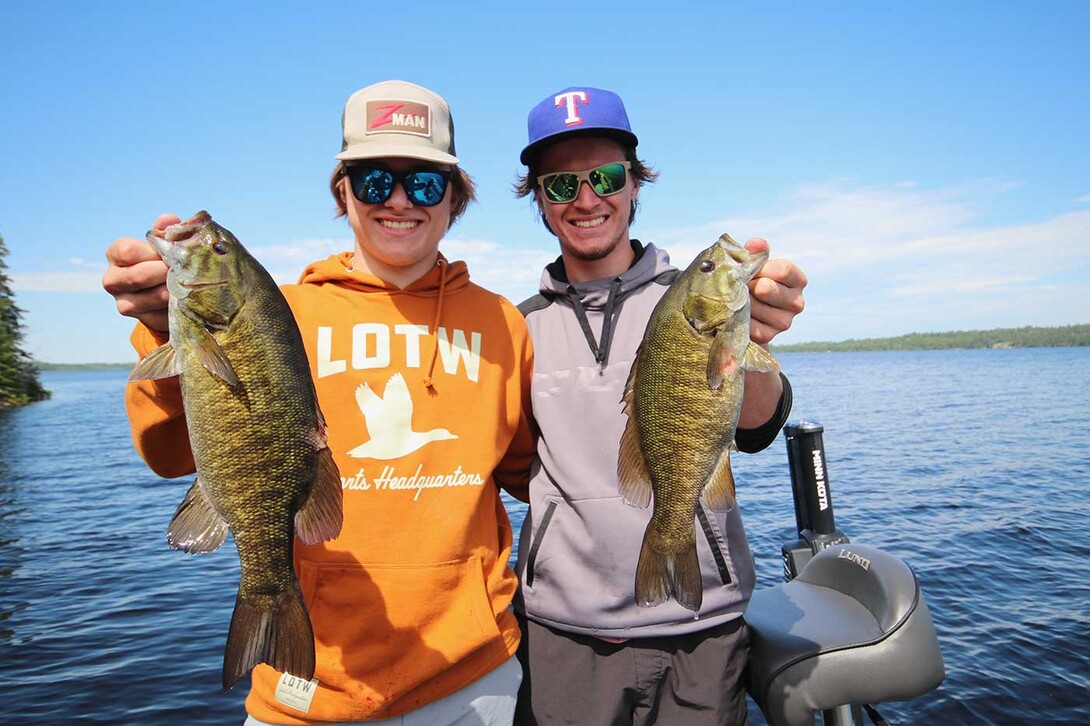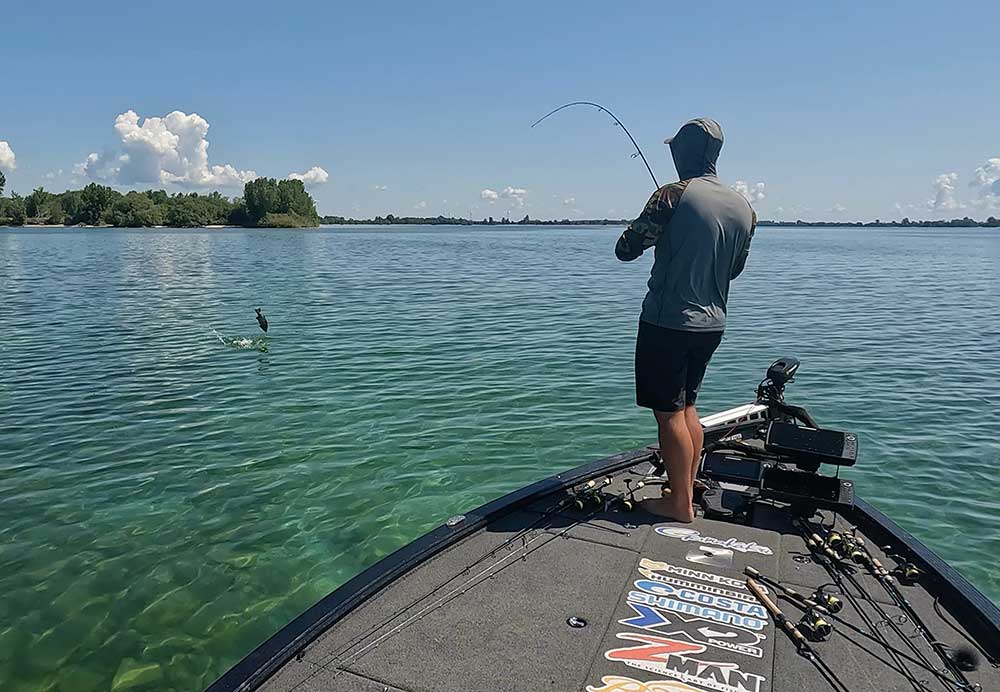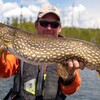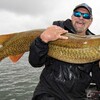
Top Five Tips For Big Smallmouth Bass In Ontario

Often overlooked because of the excellent fishing options that exist across the province for walleye, pike and musky, Ontario has some of the top smallmouth bass opportunities in the world! Today, I travel across North America, making my living competing on the Bassmaster Elite Series, the top level in competitive bass fishing but I learned how to catch smallmouths around home on Lake of the Woods and Rainy Lake in Northwest Ontario’s Sunset Country Region.

One of my favourite things about bass fishing in Ontario (you’ll also come across largemouth bass in some waterways as well) is the variety of techniques that we can use to catch them. Throughout the open water season, we can catch bass shallow, deep, in current, around vegetation, rock, and in waters with all kinds of clarity. They are plentiful and they are often easy to catch because they receive less pressure than the more popular species. Here are my best tips to help you boat more smallmouth bass on your next trip.
1. Tie On Topwater All Season Long
Growing up as a fishing guide in Northwest Ontario, one thing I did notice was that the anglers that did travel here to fish for smallmouths almost always booked their trip in late May or June, around when the bass spawn is happening. Topwater fishing is without a doubt the most exciting way to catch a smallmouth but there is a perception many anglers have that you can only catch smallmouths on topwater in the spring. This could be no further from the truth.
Topwater baits work all season long in Ontario. Smallmouths learn to pluck small bugs from the surface when they are only inches long – I watch them from my dock – and I think it’s just engrained in them at an early age that anything struggling on the surface is an easy meal.
In tournament competition in Northwest Ontario, I have a topwater bait tied on all season, even into our last events in October.

Finally, topwater baits are excellent for covering water, which is nice if you’re fishing a new body of water and don’t have a bunch of sweet spots figured out. Put on a topwater bait and start moving, you’ll run into fish sooner rather than later. Whichever style of topwater you prefer, they all work, but I most often have popper and walking-style baits tied on. The newer plopper-style baits have been popular in recent years as well. Bring your topwater box.

2. In Hot Weather, Look Shallow
Another perception that a lot of anglers have is that smallmouths will move deeper in hot weather but the opposite is true on most waters. Our season is relatively short in Ontario so smallmouths really love those stretches of consistent, hot weather in the summer. When it gets hot and especially when it’s calm, it’s time to move into the weeds and keep your eyes peeled.
It’s prime time to fish topwater baits but you can also do well looking for cruising fish around clumps of weeds, boulders, logs and sand flats, where they can be caught by pitching soft plastics on light jigs or hair jigs.
I think when it gets hot, the crayfish – a favourite food of smallmouths – get more active, crawling around on the rocks. All I know is that the best bass fishing of the summer happens in shallow water during the hottest stretches of the summer, in July and August.

3. Bass Are Predictable In Current
Many waterways have current present and whenever you find it, you’re likely going to find smallmouths. Current is easy to find in rivers and in lakes where rivers flow in. Most of the bigger lakes will have current present in them as well, but it may only be noticeable in the neck-down areas.
When bass get around current, they can be found in predictable locations – hiding behind current breaks like boulders, weed clumps and logs. They love to hide just out of the moving water, waiting for an easy meal to pass by.

If you find areas with some current, try casting small tube jigs and Ned rigs upstream of your target, then let the current “float” them past the cover. Try to keep your line semi-tight so that your bait doesn’t sink right to the bottom where the fish could miss it and you’ll have a higher chance of getting snagged.
Always remember, smallmouths love current.

4. In A Cold Front, Bust Out The Finesse
It seems like whenever I go on a fishing adventure, perfect weather turns to crap, the moment I arrive. I’m sure many of you have experienced this in the past as well. If you visit us in Ontario for your dream smallmouth adventure and you get hit by a cold front, don’t worry, you can still catch smallmouths, you just might have to switch up your tactics a little bit.
Under tough cold front conditions, smallmouths will hunker down, closer to the bottom, in deeper water and they are not as willing to swim for your bait. That means you have to get small baits in their face to trigger them to bite. This is when you want to bust out the drop-shot rig, Ned rig or similar small bait that will get down in the water column.

Smallmouths won’t necessarily vacate an area, even though it might seem that way, they just sink closer to the bottom and you have to fish much slower to generate bites. These finesse techniques are not as fun for us anglers but they are effective and you’ll be surprised at how many bonus walleye you’ll run into on most waters.

5. Later In The Season, Use Minnow Baits
As we get later in the summer months and into the fall, more smallmouths will move out of the shallower areas where they spent the spring and summer, towards main basins and their forage preference seems to change. Early in the season, smallmouths eat a lot of crayfish and bugs that hatch from the bottom but as the season progresses and more smallmouths move towards main basin areas, they start to focus more of their foraging effort on pelagic baitfish like smelt, cisco and alewives.
Try to match the hatch by using minnow-imitating lures that are four to six inches in length. I’m surprised every year at the size of the baitfish that I see smallmouths spit out, they eat much bigger baits than we think.

My favourite bait is a ⅜-oz jig head tipped with a soft plastic jerk shad, which is the most realistic option to replicate these baitfish. You can catch fish both by casting these minnow baits and by hanging them under the boat. They are also effective for catching other predator fish in our lakes like walleye, pike and lake trout. Minnow-imitating umbrella rigs, jerkbaits, flutter spoons, swimbaits and larger topwater baits are all part of my arsenal later in the season as well.
Come and visit us in Ontario for some of the best smallmouth bass fishing on the planet!

Recommended Articles

Predicting Lake Thickness
Top 8 Places to Ice Fish in Ontario
Ontario Brook Trout

3 Great Ontario Walleye Destinations

Fly-in Fishing

The Muskie: A Lean Mean Fighting Machine

Algonquin Brook Trout
Baits for Brookies

Blue Fox Camp
Five Brook Trout Flies

Reaching Deep For Walleye

Top Flies for Northern Pike

Wild Brook Trout

Eating Northern Pike

Horwood Lake Lodge

The Lake of Many Bays

Ontario’s Top Musky Fishing

St. Francis Titans

Against the Grain


